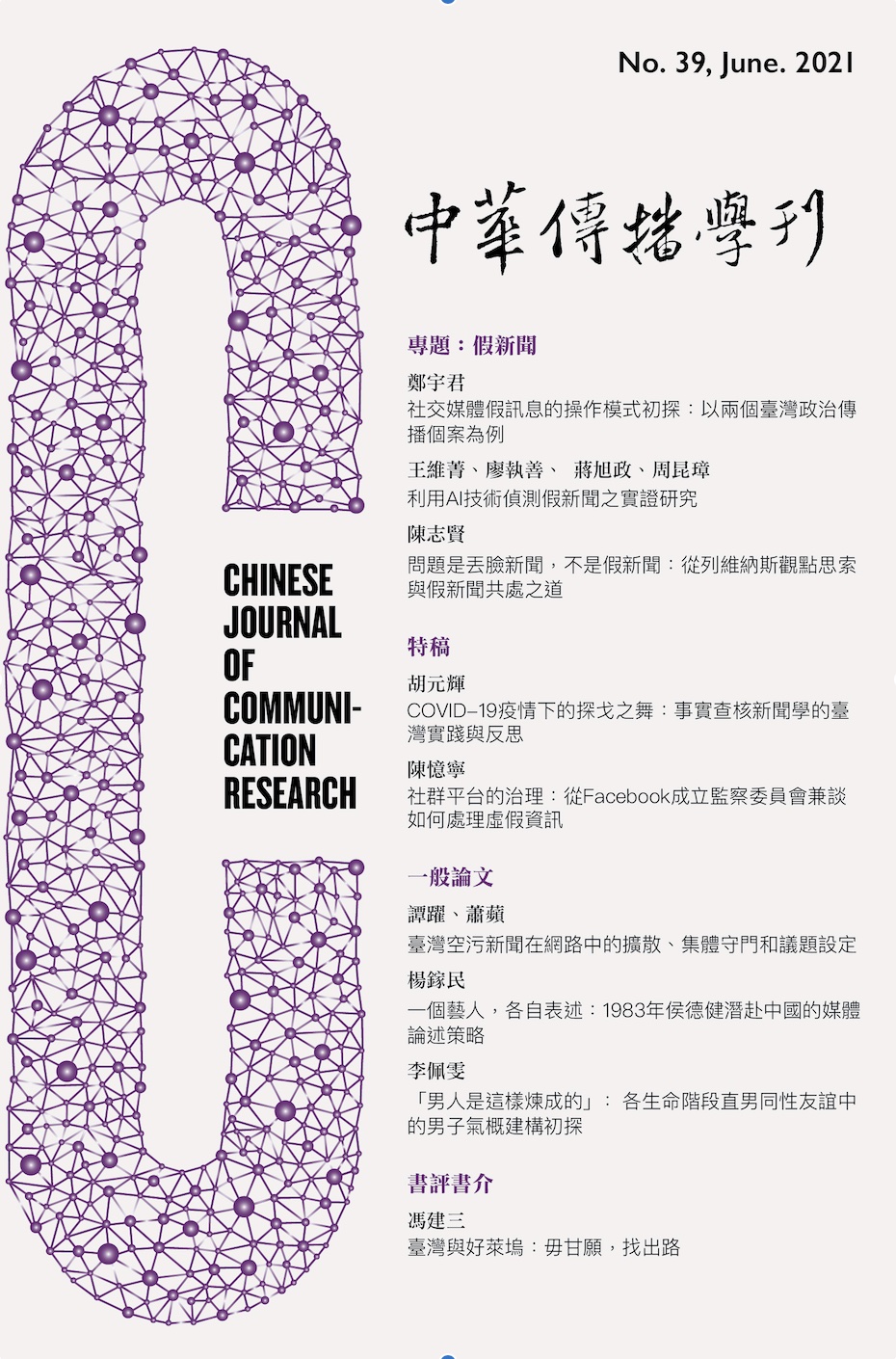 閱覽人數: 4180
閱覽人數: 4180
June
2021
No. 39
假新聞
fake news頁數:3 - 41
作者(中)
鄭宇君
作者(英)
Yu-Chung Cheng
關鍵詞(中)
社交媒體、政治傳播、假訊息、假新聞、資訊操弄、運算宣傳
關鍵詞(英)
social media, political communication, disinformation, fake news, information operation, computational propaganda
中文摘要
社交媒體時代「假新聞」的浮現與擴散是當代社會的重要議題,本文關注假訊息(disinformation)在社交媒體上的操作模式,首先探討社交媒體的演算法能供性何以成為資訊操弄的攻擊目標,進而從兩個臺灣政治傳播案例剖析假訊息的操作模式,最後從文獻探討與個案分析中提出一個多重取徑的研究框架,從訊息來源、社群分享、閱聽人接收、澄清更正等四個面向分析社交媒體假訊息的流通與擴散途徑,有助後續研究者能探討各個環節之交互作用,進而掌握社交媒體假訊息操弄對於公共意見表達與公民政治參與之影響。
英文摘要
Fake news/disinformation has become one of the most popular keywords in politics, journalism, and academia in recent years. This article explores why people receive disinformation on social media platforms and how disinformation surfaces and spreads on social media. This article first rectifies the contexts and meanings of the concept of disinformation to better represent the phenomenon of information manipulation on social media platforms. Thereafter, the effects of disinformation on the affordance of social media are examined. On the basis of case studies of political elections in Taiwan, the modes of disinformation operation are further analyzed. Finally, a research framework involving multiple approaches for analyzing the spread and manipulation of disinformation on social media is proposed in this article.